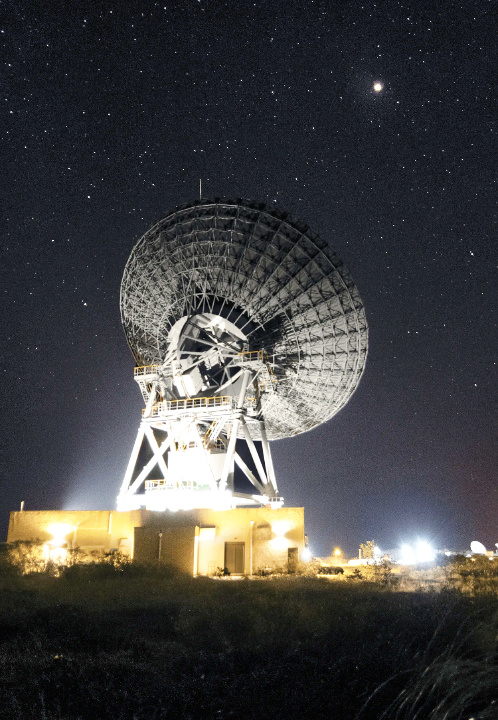
Intuitive Machines (IM) has entered a long-term agreement with Goonhilly Earth Station Ltd. to support every stage of IM’s missions to the Moon, from launch and early operations, through transit, and including lunar operations — the company will use Goonhilly’s services for its 2022 IM-1 mission to the Moon as well as future missions.


communications antenna.
Goonhilly Earth Station Ltd. will be providing access to their newly upgraded deep space antenna GHY-6 to facilitate communications between the Intuitive Machines lunar mission and the ground. GHY-6 is a former satellite communications antenna that has been given a new life supporting deep space missions for ESA, NASA, and commercial endeavors, serving as the world’s first private deep space communications asset. Qualification and testing of the refurbished ground station has been underway for many months, and the Intuitive Machines mission will be amongst the first spacecraft to be supported by GHY-6.
IM’s LTN includes other large parabolic dishes spread across the globe to provide near continuous spacecraft command, control, and communications at lunar distance. The LTN, along with IM’s control center, Nova Control, is a complete service offering to any commercial or government partners operating in cislunar space.
“The addition of Goonhilly’s GHY-6 deep space antenna adds significant data downlink capability to IM’s robust Lunar Telemetry and Tracking Network (LTN),” said Intuitive Machines’ Vice President of Control Centers, Troy LeBlanc, Ph. D. “Creating the first commercially available lunar distance communication network is a communications challenge and will require the technical support and expertise that the team at Goonhilly is ready to provide for mission tracking and data downlink services.”
“This opportunity is very exciting for Goonhilly and we’re ready to provide services to the rapidly growing commercial space sector,” said Goonhilly CTO, Matt Cosby. “For many years, different organizations have worked on coordination and standardization of mission operations and communications, allowing interoperability and flexibility that will drive down costs and development times for everyone involved.”
